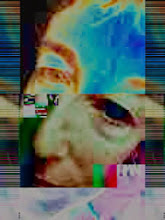What, my friends, you may ask are DSSL/UDSL?
UDSL stands for Universal Doggie Sign Language, and consists of the many signs and signals that pass between humans and dogs in their ongoing efforts to establish rapport.
For example, when a human pats the empty seat on the couch next to them, it means the dog should jump up and sit there. There's the pointy finger by which humans suggest we should fetch something-- their paper, slippers, whatnot. There's the flat palm, parallel to the floor: they want us to lie down. Or the perpendicular palm: sit-stay.
The problem with UDSL is that it was developed and refined by humans. It depends on the hand & opposable thumb. Humans have long assumed that dogs accept the universality of the language (hence their common name for it: UDSL), perhaps because in the early days of human-dog co-mingling, a few dogs formed a committee from which a recommendation was put forth and approved appear to accept UDSL as an authentic dog to human language.
Is it devastating, sad, pathetic, or perhaps the height of hubris, that in their need (or desire) to communicate, humans developed UDSL with very little recognition that conversation is the essence of communication---and that the human hand and doggie paw are skeletally quite different.
DSSL, Doggie Specific Sign Language, was developed by dogs for dogs over 5,000 years ago and while not as well known among humans, engages movements that humans and dogs can make equally well (and it certainly works far better for promoting a doggie agenda). It is dogs' preferred mode of communication among ourselves and with other species.
DSSL consists of subtle movements such as: the stare, the hard sit, cocked head, raised posterior, etc. These motions, fluid yet distinctive, serve dogs far better than UDSL serves either human or dog. UDSL, based as it is on flawed cultural assumptions engenders compliance and limits true communication. DSSL having emerged organically over the centuries, stimulates dialog, mutual respect and understanding.
Here, for example, the plaintive glance. I was longing for a crunchy treat, Mama responded with a crunchy treat. I'm sure if the situation had been slightly different, if for example, Mama gave the plaintive glance, I would in turn have given her a crunchy treat.
Recently, there have emerged a few scholarly ethnologies of DSSL/UDSL. I myself have penned a brief monograph on the subject:
See Roushanzamir, Mercury Murphy. The Elementary Structures of UDSL/DSSL and their implications for war and peace. 2014, Boston, Mass: CanineText.
Wednesday, September 02, 2015
Subscribe to:
Posts (Atom)

